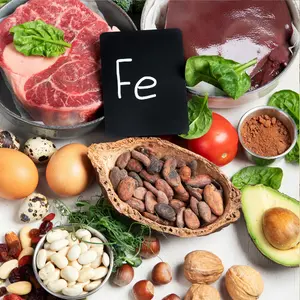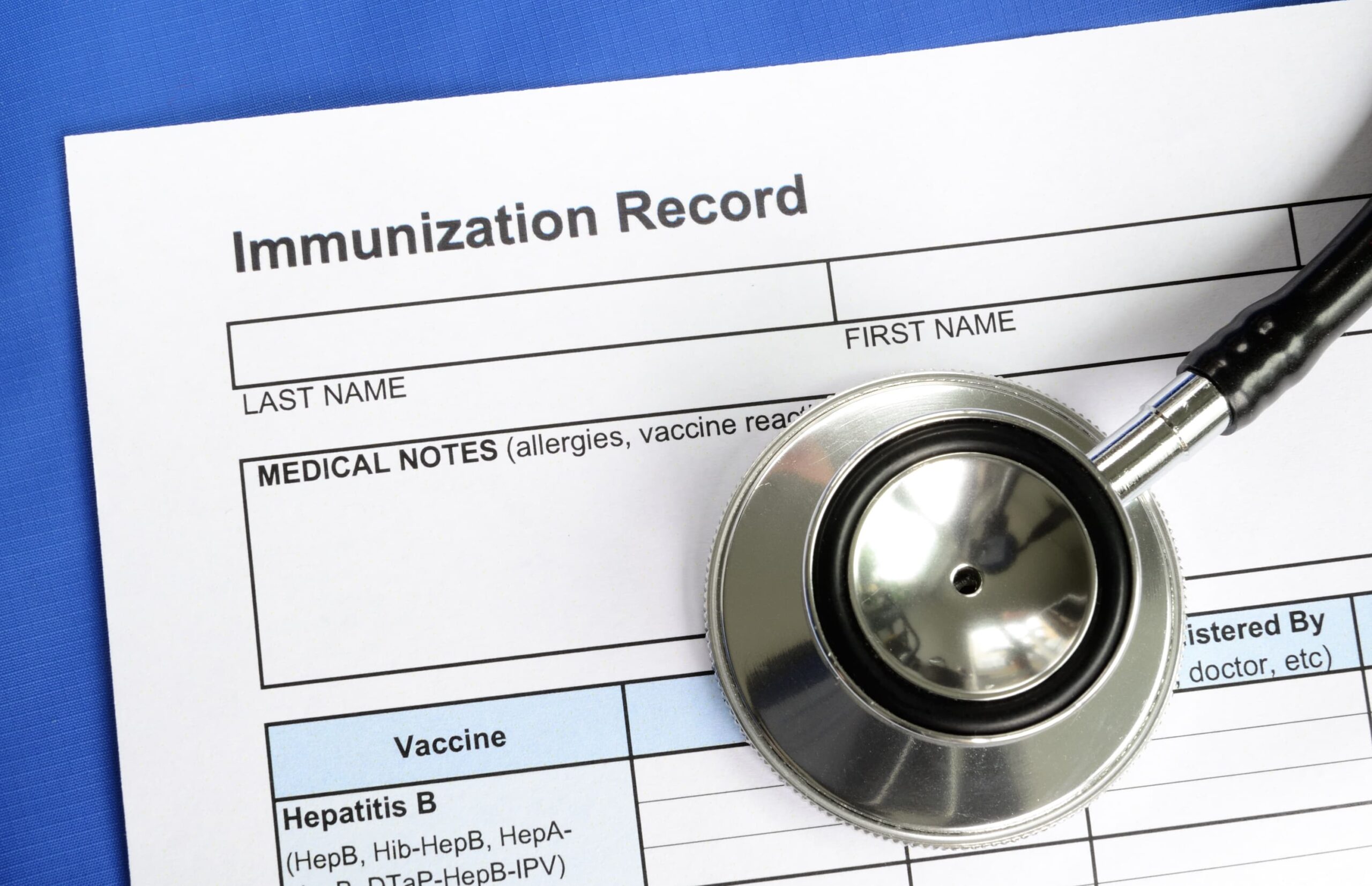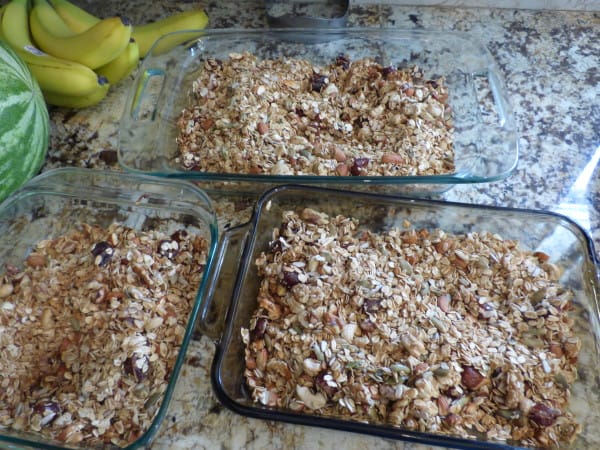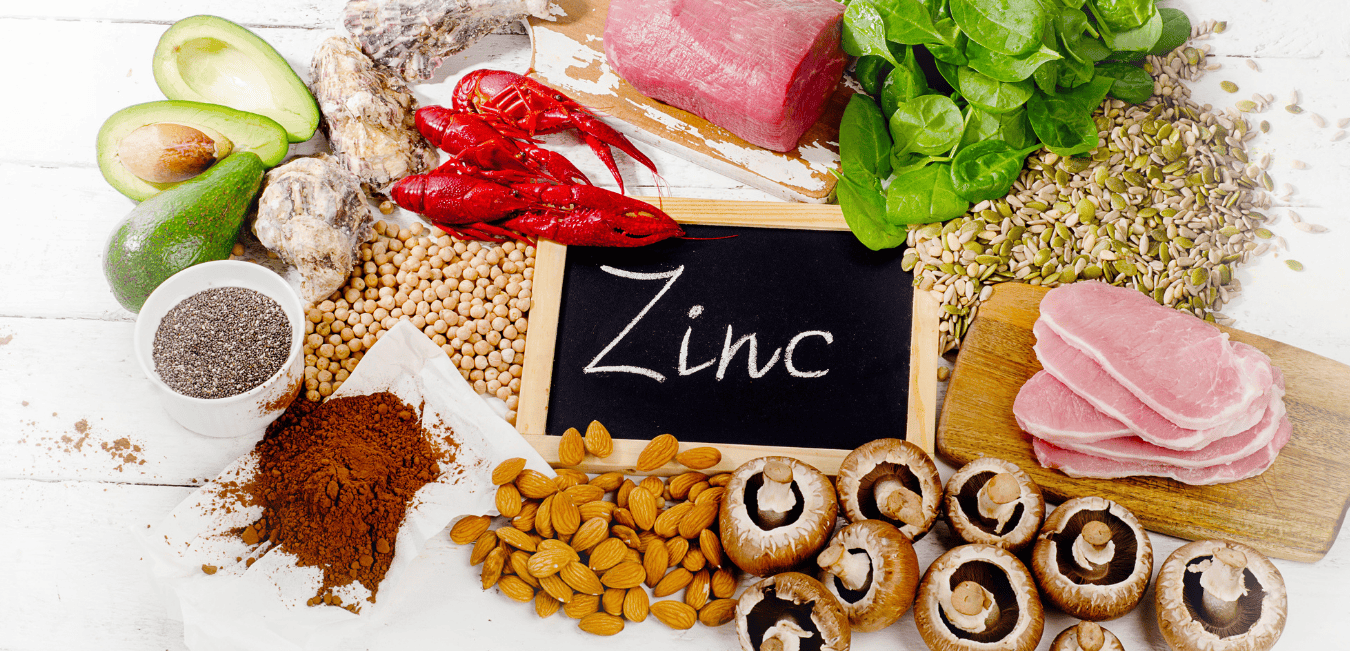Iron is vital for optimal oxygen transport and energy production. Iron deficiency is associated with impaired neurocognitive development and immune function in young children (1). Among children aged 1 to 5, approximately 7.1% exhibit deficient iron levels. Globally, iron is the most common micronutrient deficiency (2).
In this article, we’ll discuss the significance of iron as a micronutrient, signs of iron deficiency, target iron levels for babies and children, dietary sources of iron, and how to discern when iron supplementation may be beneficial. I’ll also share two family favorite and kid approved recipes that are rich in iron.
How Important Is Adequate Iron Intake For Kids?
Iron is an essential mineral that holds an important role in the growth and development of children (3). Iron is necessary for various bodily functions, including the production of hemoglobin, a protein in red blood cells that carries oxygen from the lungs to the rest of the body. This oxygen exchange fuels vital bodily functions, enabling children to thrive physically, mentally, and emotionally.
Iron is a component of the enzymes that play a role in the synthesis of collagen, an essential protein for maintaining the structural integrity of tissues like skin, bones, and blood vessels. Iron also aids in the production of neurotransmitters that facilitate communication between nerve cells in the brain (4). Furthermore, iron supports the immune system, aiding in the prevention of infections (5). Adequate iron levels are needed for cognitive development, concentration, and overall energy levels (6). In fact, one of the first noticeable symptoms of iron deficiency is often reduced energy.
What Are Symptoms Of Iron Deficiency In Children?
Children with iron deficiency may display a range of subtle symptoms. Fatigue and persistent lack of energy are the symptoms most frequently noticed by parents of kids who are low in iron. Children with low iron levels might also display irritability, poor concentration, and difficulty focusing. Some children may express having cravings for non-food items, like dirt (7).
 Physical signs may include pale skin, brittle nails, cold hands & feet, and a weakened immune system, which renders children more susceptible to infections. With more severe iron deficiency children might experience rapid heartbeat, shortness of breath, and dizziness, particularly during physical activities (7).
Physical signs may include pale skin, brittle nails, cold hands & feet, and a weakened immune system, which renders children more susceptible to infections. With more severe iron deficiency children might experience rapid heartbeat, shortness of breath, and dizziness, particularly during physical activities (7).
It’s important for parents to contact a medical professional if they notice these signs as the best way to diagnose iron deficiency is through a blood test. This can usually be done with a simple finger prick.
What Are The Risk Factors In Kids?
Iron deficiency in children can arise due to a variety of factors. The following is a list of the main risk factors for iron deficiency (8).
Key Risk Factors:
- Premature birth or low birth weight
- Early consumption of cow’s or goat’s milk before age 1
- Excessive daily consumption (over 24 ounces) of cow’s, goat’s, or soy milk (ages 1 to 5 years)
- Chronic health conditions or restricted diets
- Exposure to lead
- Inadequate intake of iron-rich foods
- Poor gut health/leaky gut
- Iron loss during menstruation (adolescent girls)
- Overweight
What Is The Difference Between Iron Deficiency and Anemia?
Iron deficiency refers to a state in which the body’s iron levels are lower than what is considered normal or optimal for proper functioning. Anemia is a condition characterized by a lower-than-normal number of red blood cells or amount of hemoglobin in the blood.
Anemia can be caused by various factors, with iron deficiency being one of the most common causes. Iron deficiency can be a cause of anemia, but being anemic doesn’t necessarily mean you have an iron deficiency. There are different types of anemia that can be caused by factors other than iron deficiency, such as vitamin deficiencies, chronic diseases, and genetic conditions.
Both iron deficiency and anemia require blood work for diagnosis and to guide treatment decisions. Sometimes, it can take several months for blood work to show improvement.
For more information on anemia and blood work, read: Troubleshooting Anemia Treatment: Reasons Your Bloodwork Isn’t Improving – Dr. Green Mom.
For more information on deficiencies that are associated with anemia, read: 9 Micronutrient Deficiencies Associated With Anemia – Dr. Green Mom.
How Much Iron Should My Child Consume?
The chart below, provided by the Mayo Clinic, shows the recommended iron intake by age per day (8). It is important to know that digestive health plays a role in how well the body absorbs nutrients, like iron. For some kids, even if they consume enough iron, their bodies may not absorb it effectively.
Table 1
Recommended Daily Iron Consumption By Age
| Age group | Recommended amount of iron per day |
|---|---|
| 7 – 12 months | 11 mg |
| 1 – 3 years | 7 mg |
| 4 – 8 years | 10 mg |
| 9 – 13 years | 8 mg |
| 14 – 18 years, girls | 15 mg |
| 14 – 18 years, boys | 11 mg |
Source: Iron deficiency in children: Prevention tips for parents – Mayo Clinic
Note: Always try to consume something rich in vitamin C, like a citrus fruit, along with your iron containing foods or supplements, as vitamin C increases iron absorption in the body (9).
What Are Good Dietary Sources of Iron?
Iron-rich foods come in two types: heme iron and non-heme iron. Heme iron, found in meat, fish, and poultry, is the type of iron most readily absorbed by the body, with about 15-35 percent typically being absorbed. Non-heme iron, present in plant-based foods like fruits, vegetables, and nuts, is not absorbed as well, with only about 2- 20 percent being absorbed (10).
While non-heme iron is still important for a balanced diet, if your family follows a vegetarian diet, you need to be aware of your child’s iron consumption and a supplement may be needed to ensure optimal intake.
 Foods High In Iron:
Foods High In Iron:
- 3.5 oz Beef Liver* – 6.6 mg of Iron
- 4 oz Ground Beef – 3.5 mg of Iron
- 3.5 oz Roasted Chicken – 3.1 mg of Iron
- ½ cup Kidney Beans – 2.2 mg of Iron
- 10 Pitted Dates – 2.4 mg of Iron
- ½ cup Cooked Spinach – 2.0 mg of Iron
- ¼ cup Almonds – 1.7 mg of Iron
Source: The Central California Blood Center Iron Rich Foods List (11)
*If you don’t enjoy the taste of beef liver, taking it in a supplement form is a wonderful way to consume more of this extremely nutrient dense food on a regular basis.
For ideas about how to hide beef liver supplements in your kids’ food, read Beef Liver Capsules Are A Great First Food For Babies – Dr. Green Mom.
When Should I Consider Supplementation For My Child?
In my practice, if a child exhibits symptoms of or has risk factors for iron deficiency or follows a vegetarian diet, I run a blood test to check iron levels. If iron deficiency is confirmed, and the parents express that the child isn’t a picky eater, my first course of action is to incorporate more iron-rich foods into the child’s diet. A month later, I will check iron levels again; if levels remain low, I may recommend adding an iron supplement. If the child doesn’t eat much meat, or has a limited diet, I usually have the child start with an iron supplement right away and encourage the parents to help expand the child’s diet.
Children with specific risk factors, such as chronic health conditions, dietary restrictions, or limited exposure to iron-rich foods, may require ongoing supplementation. Additionally, pediatricians may recommend an iron supplement for infants and toddlers born prematurely, as they may have lower iron stores. Iron is a supplement that needs to be taken under the guidance of a professional as excessive iron intake can lead to potential side effects.
For information on how to put together a supplement regime for your family, see: How To Create A Daily Supplement Protocol For Your Family – Dr. Green Mom.
For information on getting nutrition from food vs supplements, see: Is Getting Nutrition From Food Better Than Taking a Supplement? – Dr Green Mom.
My Favorite Iron-Rich Recipes
The following recipes are kid approved and call for foods that are great sources of iron.
Easy Chickpea Pasta With Meat Sauce
Total iron = 6.7 mg
Ingredients:
- 1 box of Chickpea Pasta (2 oz = 3.7 mg of iron)
- 1 lb of Force Of Nature Ancestral Blend Ground Beef* (4 oz = 3 mg of iron)
- 1 jar of Organic Tomato Sauce of choice (a source of vitamin C)
- Shredded cheese, optional
- Finely chopped parsley, optional
Instructions:
- Bring filtered water to a boil in a large saucepan and cook the chickpea pasta according to package instructions.
- Meanwhile, brown and crumble beef as it cooks.
- Once meat is fully cooked, stir in the tomato sauce and gently simmer for 2 minutes.
- Once pasta is cooked, drain and serve with meat sauce. If desired, add cheese and parsley on top.
*Substitute with regular ground beef and mix in the contents of up to 3 capsules of Grass Fed & Finished Beef Liver Capsules while cooking. Discard capsule shells.
Iron-Rich Smoothie
Total iron = 4.94 mg
Ingredients:
- 1 small beet, cooked (0.5 mg of iron)
- 1/2 cup frozen cherries (0.25 mg of iron)
- 2 dried apricots, soaked in water until softened (0.4 mg of iron)
- 1 tsp blackstrap molasses (0.7 mg of iron)
- 1 frozen banana (1.3 mg of iron)
- 1 cup tart cherry juice (1.13 mg of iron)
- ½ oz frozen raw beef liver* (0.66 mg of iron)
Instructions:
- Combine all ingredients in a blender and blend for about 2 minutes or until mixture is smooth.
*Substitute with the contents of one beef liver capsule. Open the capsule and empty its contents into the blender with other ingredients before blending. Discard capsule shell.
Summary
Iron is an essential mineral that plays an important role in the growth and development of children. There are two main types of Iron. Heme iron, found in meat, fish, and poultry, is the type of iron most readily absorbed by the body. Non-heme iron, present in plant-based foods like fruits, vegetables, and nuts, is not absorbed as well. When children aren’t able to absorb adequate iron from their diet, supplementation may be beneficial to prevent iron deficiency. However, it is important to work under the guidance of a professional when supplementing with iron. Fatigue and persistent lack of energy are common symptoms of iron deficiency. Eating foods rich in iron may help prevent or treat iron deficiency.
References:
- Gupta, P. M., Perrine, C. G., Mei, Z., & Scanlon, K. S. (2016). Iron, Anemia, and Iron Deficiency Anemia among Young Children in the United States. Nutrients, 8(6), 330. https://doi.org/10.3390/nu8060330
- Centers for Disease Control and Prevention. (2021, April 30). Micronutrients. Centers for Disease Control and Prevention. https://www.cdc.gov/nutrition/micronutrient-malnutrition/index.html
- Iron. The Nutrition Source. (2023, March 7). https://www.hsph.harvard.edu/nutritionsource/iron/
- UCSF Health. (2023, May 8). Hemoglobin and functions of Iron. ucsfhealth.org. https://www.ucsfhealth.org/en/education/hemoglobin-and-functions-of-iron
- Soyano, A., & Gómez, M. (1999). Participación del hierro en la inmunidad y su relación con las infecciones [Role of iron in immunity and its relation with infections]. Archivos latinoamericanos de nutricion, 49(3 Suppl 2), 40S–46S.
- Jáuregui-Lobera I. (2014). Iron deficiency and cognitive functions. Neuropsychiatric disease and treatment, 10, 2087–2095. https://doi.org/10.2147/NDT.S72491
- Weckmann, G., Kiel, S., Chenot, J. F., & Angelow, A. (2023). Association of Anemia with Clinical Symptoms Commonly Attributed to Anemia-Analysis of Two Population-Based Cohorts. Journal of clinical medicine, 12(3), 921. https://doi.org/10.3390/jcm12030921
- Mayo Foundation for Medical Education and Research. (2022, February 25). Is your child low on iron? prevention tips for parents. Mayo Clinic. https://www.mayoclinic.org/healthy-lifestyle/childrens-health/in-depth/iron-deficiency/art-20045634
- Lynch, S. R., & Cook, J. D. (1980). Interaction of vitamin C and iron. Annals of the New York Academy of Sciences, 355, 32–44. https://doi.org/10.1111/j.1749-6632.1980.tb21325.x
- Monsen E. R. (1988). Iron nutrition and absorption: dietary factors which impact iron bioavailability. Journal of the American Dietetic Association, 88(7), 786–790.
- Iron Rich Foods. (n.d.-b). https://www.donateblood.org/wp-content/uploads/2018/09/iron-rich-foods.pdf








2 Comments